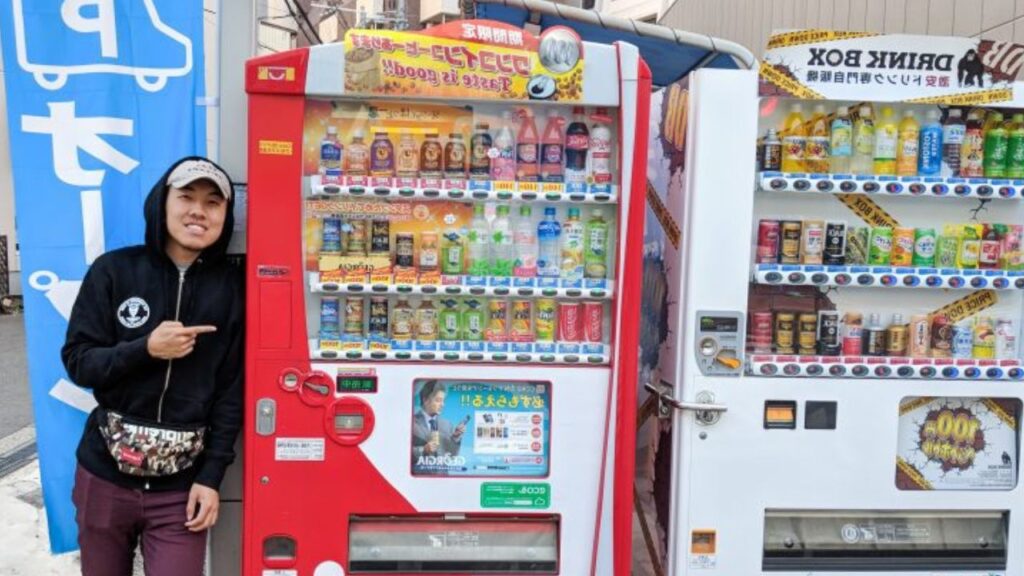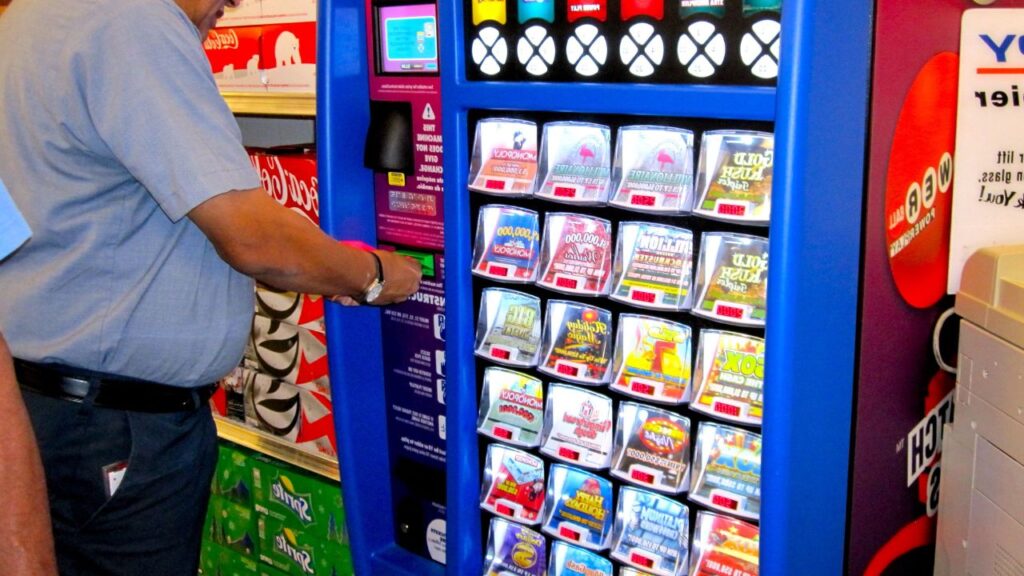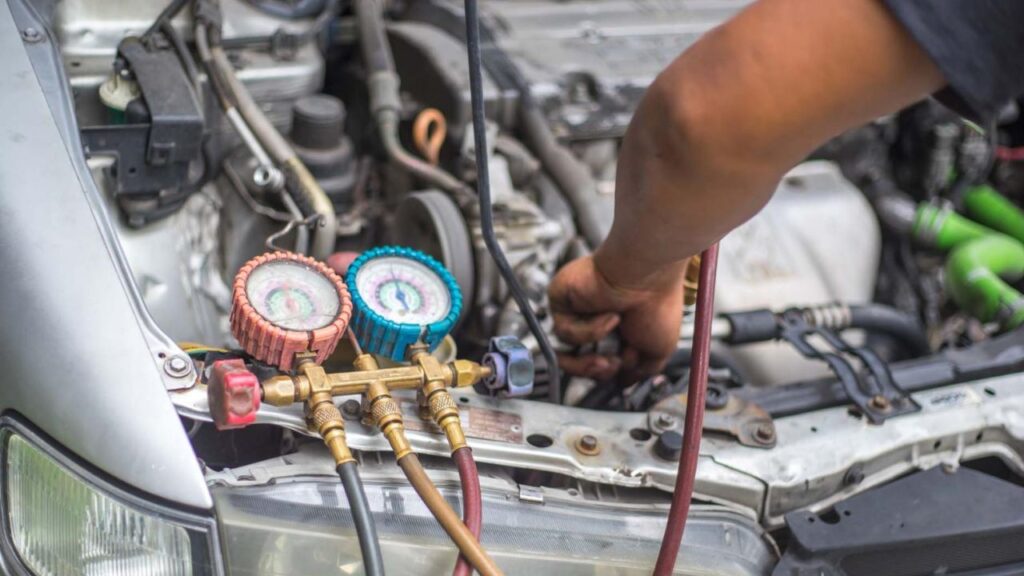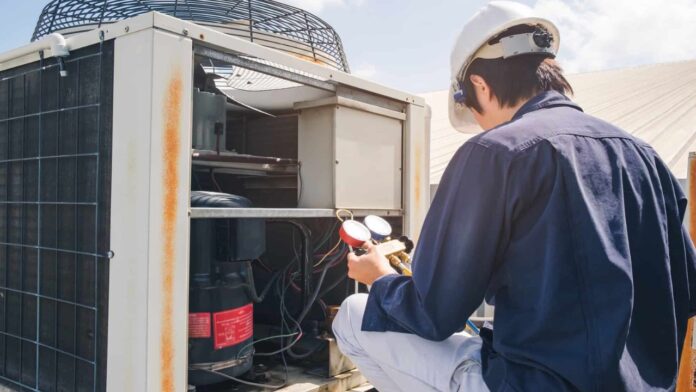Vending machine compressor repair is a crucial aspect of maintaining the functionality of vending machines. Compressors play a vital role in cooling systems, ensuring that perishable items stay fresh within the machine. This repair process involves diagnosing issues such as motor failure, refrigerant leaks, or electrical malfunctions, and subsequently repairing or replacing components as necessary. Skilled technicians employ various tools and techniques to troubleshoot and rectify compressor problems, ensuring optimal performance and prolonging the lifespan of vending machines. Timely and efficient repair not only minimizes downtime but also ensures uninterrupted service, benefiting both vending machine operators and customers alike.
Compressors Basics and Functionality
Vending machine compressors are integral components responsible for regulating temperature and preserving product freshness. Functioning as the heart of the cooling system, compressors circulate refrigerant gases, compressing them to cool the interior of the machine. By compressing the refrigerant, it increases its pressure, causing it to release heat and cool down rapidly when it expands.
This process maintains the desired temperature within the vending machine, ensuring that perishable items remain at optimal conditions for consumption. Understanding the basics of vending machine compressors is essential for operators and technicians to maintain efficient operation and promptly address any issues that may arise, maximizing machine performance.

Signs of Compressor Issues in Vending Machines
Signs of compressor issues in vending machines manifest through various symptoms, including inadequate cooling, unusual noises, or frequent cycling on and off. Diagnosis begins with a thorough inspection of temperature consistency and compressor operation. Abnormal sounds like grinding or clicking often signal mechanical problems, while inconsistent cooling indicates potential refrigerant leaks or compressor inefficiency.
Technicians utilize diagnostic tools to measure temperature, pressure, and electrical currents, pinpointing underlying issues accurately. Troubleshooting involves assessing compressor motor health, checking for refrigerant leaks, and examining electrical connections for faults. Prompt identification and resolution of compressor issues are vital to maintaining vending machine functionality, ensuring product quality, and customer satisfaction.
Tools Required for Compressor Repair
Vending machine compressor repair demands a toolkit equipped with essential instruments to diagnose and rectify issues efficiently. Key tools include refrigerant leak detectors for identifying leaks, manifold gauges to measure refrigerant pressure, and multimeters to assess electrical connections and motor functionality. Additionally, vacuum pumps facilitate the evacuation of air and moisture from the refrigeration system, ensuring optimal performance.
Wrenches, screwdrivers, and pliers are indispensable for disassembly and reassembly tasks. A recovery machine is essential for safely removing refrigerant from the system before repair. Equipped with these tools, technicians can conduct thorough diagnostics and execute precision repairs, restoring vending machines to full functionality.

Safety Precautions When Working on Compressors
Safety precautions are paramount when working on vending machine compressors to mitigate risks and ensure technician well-being. Firstly, powering off the machine and disconnecting electrical sources is imperative to prevent shocks. Proper ventilation and protective gear, including gloves and safety goggles, shield technicians from refrigerant exposure and potential hazards.
Adhering to manufacturer guidelines and utilizing lockout/tagout procedures prevent accidental activation during repairs. Regular equipment inspections and adherence to industry regulations enhance safety protocols. Additionally, ongoing training on handling hazardous materials and emergency procedures reinforces a safety-first mindset. By prioritizing precautionary measures, technicians safeguard themselves and others while maintaining vending machine compressor systems.
Disassembling a Vending Machine Compressor Unit
Disassembling a vending machine compressor unit requires meticulous steps to ensure efficient repair and maintenance. Begin by powering off the machine and disconnecting electrical sources. Remove any panels or covers obstructing access to the compressor. Next, discharge refrigerant safely using proper equipment to avoid environmental harm.
Disconnect electrical connections and tubing carefully, noting their positions for reassembly. Utilize appropriate tools to detach the compressor from its mounting. Finally, inspect components for damage or wear, noting any necessary replacements. Documenting each step and organizing removed parts aids in reassembly. Following this systematic approach ensures a thorough disassembly process for vending machine compressor repair.
Identifying Common Problems in Compressors
Identifying common problems in vending machine compressors is crucial for maintaining operational efficiency. Common issues include inadequate cooling caused by refrigerant leaks or low pressure, evident through temperature fluctuations. Unusual noises like grinding or rattling signal mechanical faults or worn bearings. Excessive cycling on and off may result from electrical issues or compressor motor failure.
Moreover, compressor overheating can stem from restricted airflow or refrigerant flow obstructions. Regular inspection of compressor components, including coils, capacitors, and connections, facilitates early detection of these problems. By promptly recognizing and addressing these issues, technicians ensure optimal vending machine performance and customer satisfaction.
Cleaning and Maintenance for Compressors
Cleaning and maintenance of vending machine compressors are vital preventative measures to uphold optimal performance. Regularly clean compressor coils to remove dust and debris, ensuring efficient heat transfer and cooling. Inspect and replace air filters to maintain proper airflow and prevent dust buildup. Lubricate moving parts to reduce friction and extend component lifespan.
Check refrigerant levels and connections periodically to prevent leaks and ensure proper function. Additionally, schedule professional maintenance at regular intervals to identify and address potential issues early. By implementing these cleaning and maintenance tips, operators can prolong the life of vending machine compressors and minimize costly repairs, ensuring uninterrupted service for customers.
Replacing Faulty Components in Compressors
Replacing faulty components in vending machine compressors involves precise procedures and knowledge of essential parts. Begin by identifying the problematic component through diagnostics, such as testing electrical connections or inspecting for leaks. Commonly replaced parts include capacitors, relays, start components, and motor assemblies.
Utilize appropriate tools to disassemble the compressor unit safely, ensuring proper handling of refrigerant. Replace the faulty component with a compatible replacement, following manufacturer specifications. Test the compressor thoroughly post-replacement to verify functionality. Proper documentation of parts and procedures aids in future maintenance and troubleshooting. By adhering to these steps, technicians ensure efficient and effective repair of vending machine compressors.

Refrigerants in Vending Machine Compressors
Refrigerants in vending machine compressors is crucial for proper handling and maintenance. Common types include R-134a and R-404A, each with specific pressure and temperature characteristics. Technicians must adhere to safety guidelines when handling refrigerants, including wearing protective gear and using specialized equipment for recovery and charging.
Regularly monitoring refrigerant levels ensures optimal compressor performance and prevents system damage. Additionally, proper disposal of used refrigerants is essential to mitigate environmental impact. Familiarity with refrigerant types and handling procedures equips technicians to maintain vending machine compressors effectively, prolonging their lifespan and ensuring reliable operation.
Energy Efficiency in Vending Machine Compressors
Optimizing energy efficiency in vending machine compressors is essential for cost savings and environmental sustainability. Start by setting temperature controls to the recommended levels to minimize compressor workload. Regularly clean compressor coils and ensure proper airflow to enhance cooling efficiency. Utilize programmable thermostats to adjust cooling cycles based on demand, reducing energy consumption during off-peak hours.
Additionally, consider upgrading to energy-efficient compressors or retrofitting existing units with variable speed drives to match output with demand. Implementing these tips not only reduces operational costs but also decreases carbon footprint, promoting eco-friendly vending machine operation while maintaining profitability.
Sourcing Replacement Parts for Compressors
Sourcing replacement parts for vending machine compressors requires careful consideration to ensure compatibility and quality. Start by identifying reputable suppliers specializing in vending machine parts. Trusted sources include manufacturers, authorized distributors, and online retailers with positive reviews and a wide selection.
Consider factors such as part specifications, warranty coverage, and shipping times when making purchasing decisions. Prioritize OEM (Original Equipment Manufacturer) parts for guaranteed compatibility and reliability. Additionally, inquire about return policies and customer support options for peace of mind. By choosing reliable suppliers and quality parts, operators can efficiently maintain vending machine compressors and minimize downtime.
Choosing the Right Approach for Compressors
Choosing the right approach for vending machine compressors involves evaluating factors like budget, efficiency, and sustainability. Operators can opt for proactive maintenance, scheduling regular inspections and tune-ups to prevent breakdowns. Alternatively, reactive repair focuses on addressing issues as they arise, potentially saving upfront costs but risking downtime.
Upgrading to energy-efficient compressors or retrofitting existing units with modern components can optimize performance and reduce long-term operational costs. Collaborating with experienced technicians or engaging with manufacturers for tailored solutions ensures informed decision-making. Ultimately, selecting the appropriate approach aligns with operational goals, ensuring reliable vending machine compressor functionality while maximizing profitability.
Wiring and Circuit Analysis
Troubleshooting electrical issues in vending machine compressors requires a systematic approach to identify and resolve problems efficiently. Begin by inspecting wiring connections for signs of damage or loose connections, ensuring all electrical components are securely connected. Utilize a multimeter to measure voltage and continuity along circuits, pinpointing any abnormalities or faults.
Analyze circuit diagrams and schematics to understand the electrical layout and isolate potential issues. Common problems include blown fuses, defective capacitors, or faulty relays. By conducting thorough wiring and circuit analysis, technicians can accurately diagnose electrical issues and implement targeted repairs, restoring vending machine compressor functionality promptly.
Repairing Refrigerant Leaks in Compressors
Repairing refrigerant leaks in vending machine compressors necessitates precise techniques to ensure optimal performance and environmental safety. Begin by locating the leak using specialized detection tools like ultraviolet dye or electronic leak detectors. Once identified, assess the severity and location of the leak to determine the appropriate repair method.
Common techniques include brazing or soldering for metal components and applying epoxy or sealant for minor leaks in tubing or connections. Ensure compatibility with refrigerant types and adhere to safety regulations throughout the repair process. Thorough testing post-repair confirms effectiveness and prevents further refrigerant loss, preserving compressor efficiency and minimizing environmental impact.
Upgrading Vending Machine Compressors
Upgrading vending machine compressors offers significant enhancements in performance and reliability, ensuring better customer satisfaction and operational efficiency. Modern compressors feature advanced technologies such as variable speed drives, improving energy efficiency and reducing operating costs. Enhanced cooling capabilities and quieter operation contribute to better product preservation and customer experience.
Additionally, upgrading enables compatibility with eco-friendly refrigerants, aligning with sustainability goals. Retrofitting existing machines with upgraded compressors prolongs their lifespan and reduces maintenance requirements. By investing in compressor upgrades, operators can achieve a competitive edge, delivering superior service while maximizing profitability and sustainability in the vending machine industry.
Maintenance Strategies
Preventing future problems in vending machine compressors necessitates diligent maintenance strategies to uphold operational reliability and prolong lifespan. Implementing a regular maintenance schedule ensures timely inspection and servicing of compressor components, including cleaning coils, checking refrigerant levels, and replacing worn parts.
Utilize advanced diagnostic tools to detect potential issues early, mitigating the risk of major breakdowns. Additionally, training staff on proper usage and maintenance procedures fosters a proactive approach to compressor care. Documenting maintenance activities and performance metrics facilitates trend analysis and optimization. By prioritizing preventative maintenance, operators safeguard against costly repairs and downtime, ensuring uninterrupted vending machine operation and customer satisfaction.
Advanced Diagnosis Techniques
Troubleshooting uncommon issues in vending machine compressors demands advanced diagnosis techniques to pinpoint and resolve complex problems effectively. Begin by conducting a comprehensive assessment of the compressor system, including electrical components, refrigerant levels, and mechanical integrity. Utilize specialized diagnostic equipment such as thermal imaging cameras or vibration analyzers to identify subtle anomalies.
Analyze data trends and system behavior to uncover underlying issues, which may include refrigerant contamination, compressor oil degradation, or internal component wear. Collaborate with experienced technicians or consult manufacturer resources for tailored solutions. By employing advanced diagnosis techniques, operators ensure thorough troubleshooting and expedited resolution of uncommon compressor issues, minimizing downtime and optimizing vending machine performance.
Conclusion
Vending machine compressor repair stands as a critical aspect in maintaining the functionality and longevity of these ubiquitous machines. Addressing issues promptly through thorough diagnostics, precise repairs, and proactive maintenance not only ensures uninterrupted service but also upholds product quality and customer satisfaction.
From identifying common problems to implementing advanced diagnosis techniques, a comprehensive approach is essential in safeguarding against downtime and minimizing operational costs. By prioritizing preventative measures and investing in timely repairs, operators can optimize compressor performance, prolong machine lifespan, and uphold the reliability of vending services, ultimately enhancing profitability and customer trust in this indispensable aspect of modern convenience.
FAQs
What are the Common Signs of a Compressor Problem in a Vending Machine?
Common signs include inadequate cooling, unusual noises (such as grinding or rattling), frequent cycling on and off, and compressor overheating.
How do I Diagnose Compressor Issues in a Vending Machine?
Diagnosis involves inspecting temperature consistency, and compressor operation, and conducting tests with diagnostic tools to measure temperature, pressure, and electrical currents.
Can I Repair a Vending Machine Compressor Myself?
While some basic maintenance tasks can be performed by operators, compressor repair often requires specialized knowledge and tools. It’s generally recommended to hire a trained technician for complex repairs.
What are the Essential Tools Required for Vending Machine Compressor Repair?
Essential tools include refrigerant leak detectors, manifold gauges, multimeters, wrenches, screwdrivers, pliers, vacuum pumps, and recovery machines.
How can I Prevent Compressor Issues in My Vending Machine?
Preventative measures include regular cleaning and maintenance of compressor components, monitoring refrigerant levels, ensuring proper airflow, and scheduling professional maintenance at regular intervals.
Where can I Source Replacement Parts for Vending Machine Compressors?
Replacement parts can be sourced from manufacturers, authorized distributors, and reputable online retailers specializing in vending machine parts.

